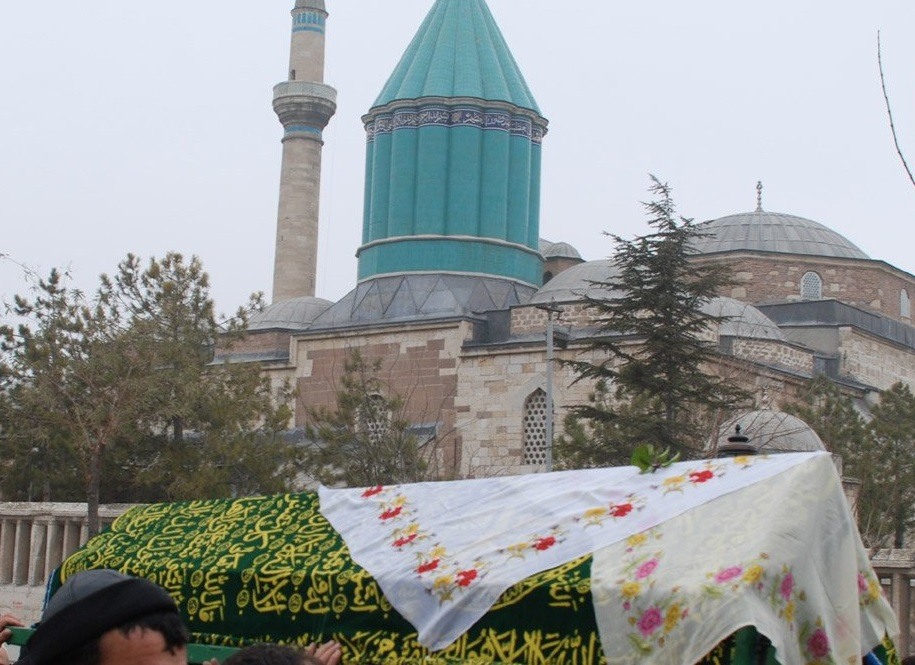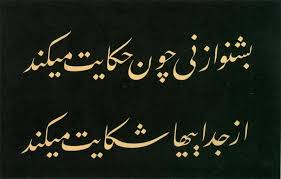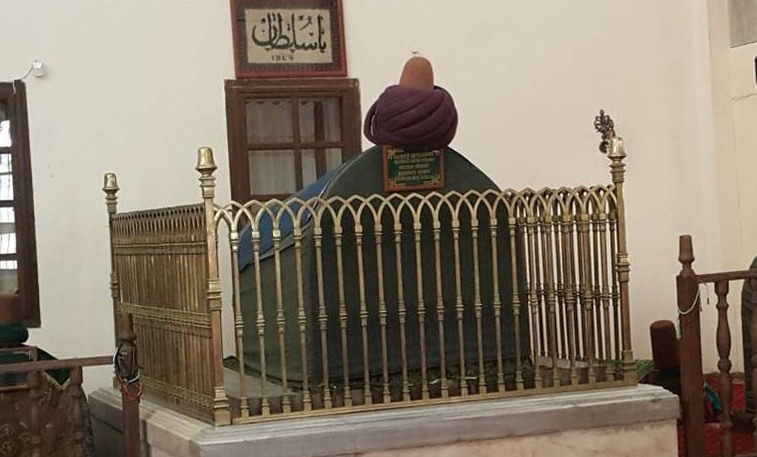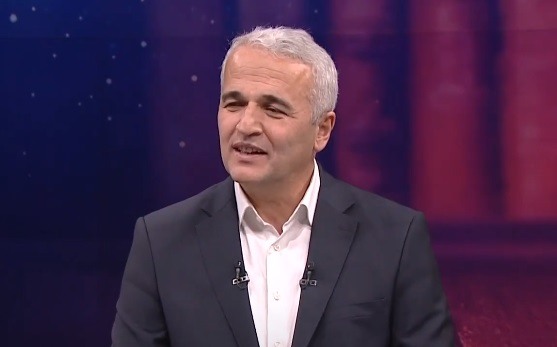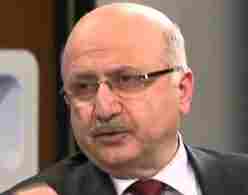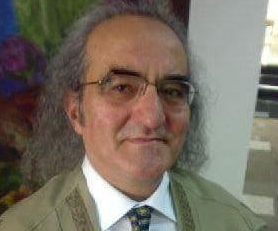ŞEYH GALİP’İN DÜŞÜNCE ATLASINDAKİ KAYNAKLAR VE ŞAHSİYETLER
ŞEYH GALİP’İN DÜŞÜNCE ATLASINDAKİ KAYNAKLAR VE ŞAHSİYETLER
SOURCES AND PERSONALITIES IN SHEIKH GHALIB’S ATLAS OF THOUGHT
Muhsin KALKIŞIM1
ÖZ
Bu çalışmada Şeyh Galip’in dört eseri (Dîvân, Hüsn ü Aşk, Şerh-i Cezîre-i Mesnevî, Es-Sohbetü’s-Sâfiyye) taranmış; ayet ve hadislerle birlikte 100’ün üzerinde şahsiyet tespit edilmiştir. Çalışmamızda bunlardan belirgin olarak öne çıkan 47’si üzerinde durulmuş, diğerleri liste hâlinde verilmiştir. Şeyh Galip, eserlerinde Kur’ân’ın 72 suresinden 176 ayete ve Hz. Muhammed’in 43 hadisine atıf yapmıştır. Peygamberlerden Hz. İbrahim, Hz. Yakup, Hz. Yusuf, Hz. Musa, Hz. Süleyman ve Hz. İsa daha ön planda ele alınmış, ledünnî ilmi temsil eden Hz. Hızır, şair tarafından sıklıkla dile getirilmiştir. Sahabe-i kiramdan Hz. Ebubekir ve Hz. Ali isimlerine özellikle vurgu yapılmış olup onun fikrî müktesebatında yer alan kadınlar arasında Hz. Meryem ve Hz. Fatıme ilk sırada görülmektedir. Şeyh Galip’in düşünce atlasında sayısal bakımdan ağırlığı 22 mutasavvıf teşkil etmektedir. Mevlana’dan önceki silsilede bilhassa Hallac-ı Mansur ve Muhyiddin-i Arabî, müellifin ruh dünyasına nüfuz etmiş iki isimdir.Klasik Türk şiirinin geleneğiyle paralel olarak felsefi alanda Eflatun ve Aristo’ya, nakkaşlıkta Mani ve Bihzad’a önemli atıflar yapan müellifin ele aldığı şahsiyetler arasında fıkıh âlimlerinin belirgin bir yeri yoktur. Birer âşık karakteri olan “Ferhad” ve “Kays”, aşk mesleğinin saliki olan Şeyh Galip için iki önemli kaynaktır. Şiirde eskilerden Fuzulî’yi ve Şevket-i Buharî’yi referans alan Şeyh Galip, hocası Süleyman Neşet’ten de etkilenmiştir.
Anahtar Kelimeler: Şeyh Galip, şahsiyet, Divan, Hüsn ü Aşk, Şerh-i Cezire-i Mesnevî, Es-Sohbetü’s-Safiyye
ABSTRACT
In this study, four works of Sheikh Ghalib (Dîvân, Hüsn ü Aşk, Şerh-i Cezire-i Mesnevî, Es-Sohbetü’s-Sâfiyye) were reviewed, and more than 100 scholarly sources and personalities were identified. We focused on 47 that stand out in this study and listed the remaining sources and personalities. Sheikh Ghalib referred to 176 verses from 72 chapters of the Quran and 43 hadiths of Prophet Muhammad (saw) in his works. Among the prophets, Abraham (as), Jacob (as), Joseph (as), Moses (as), Suleiman (as), and Jesus (as) were especially highlighted. Khidr (as), who symbolizes knowledge because of God’s blessing, was also frequently mentioned by the poet. From the companions of the Prophet Muhammad (saw), a particular emphasis was placed on the names of Abu-Bakr and Ali. Maryam and Fatimah were among the women included in his intellectual acquis and mentioned most. 22 Sufis formed Sheikh Ghalib’s atlas of thought. Among the Sufi scholars, Al-Hallaj and Ibn Arabi were the two most important figures chronologically before the Rumi. In parallel with the tradition of classical Turkish poetry, the author makes essential references to Plato and Aristotle in the philosophical field and Mani and Bihzad in miniature painting. Fiqh scholars do not have a prominent place in his works. Farhad and Qays, the characters of a love story, are two critical sources for Sheikh Ghalib, a pilgrim of love. Sheikh Ghalib, who takes Fuzuli and Shawkat Bukhari as references in the poem, was also influenced by his teacher Suleiman Nashat.
Keywords: Sheikh Ghalib, personality, Diwan, Hüsn ü Aşk, Şerh-i Cezire-i Mesnevî, As-Sohbetü’s-Safiyya
Extended Abstract
Sheikh Ghalib (1757-1799) was born and raised in a Mawlawi family and was shaped by the Mawlawi culture. Muhammad Asad, who was involved in asceticism (riyazat) in the Konya Mawlana Dervish Lodge in 1784, completed his asceticism in Istanbul Yenikapi Mawlawi Lodge in 1787 and became “Dede” (Cell-niche). Galip Dede, who received the caliphate from Sheikh Ali Nutkî Efendi and was appointed as the Sheikh of Galata Mawlawi lodge in 1791, and was tasked with the assignment of the Mathnawi-khans in 1794. Sheikh Ghalib is also the last great peak of classical Turkish poetry.
In this study, we tried to put forward the intellectual acquis of a classical poet from the Sufi tradition. Four works of Ghalib, who is a Mawlawi sheikh (Dîvân, Hüsn ü Aşk, Şerh-i Cezîre-i Mesnevî, Es-Sobetüs’s-Sâfiyye) were reviewed, and more than 100 scholarly sources and personalities were identified. In the study, 47 of them, which stand out significantly, were emphasized, and the others were listed. We can classify Sheikh Ghalib’s intellectual resources and the personalities he dealt with in his works as follows:
- The Quran and the Prophet Muhammed: Sheikh Ghalib referred176 verses from 72 chapters of the Quran in his works, and he referred to 43 hadiths of Prophet Muhammad (saw). Quranic verses and hadiths are referred to as wholly or
The Quran is a revelation that has come from God’s throne. Other words are human words and are considered within the context of “inspiration” in regular expression. If unseen knowledge has come to prophets, it is a revelation; if it comes to other persons, it is “inspiration.” Revelation is shadowless, pure, and clean. Inspiration, on the other hand, can be mixed at times and can be tainted. Even if the inspiration comes from a miracle source, it cannot claim to be similar to the Quran.
The Quran refers to Allah’s Shariah from the attribute of “Kalam”; The universe is the shari’ah that comes from the attribute of “İrâde/will.”
- Prophets: Among the prophets, especially Abraham (as), Jacob (as), Joseph (as), Moses (as), Suleiman (as), and Jesus (as) especially highlighted It is a remarkable approach that the poet frequently mentions Khidr (as).
- Companions: Rumi genealogically reaches Ali according to the sect and Ebûbekr according to the blood. In the works of Sheikh Galip, an emphasis is placed on the names of Abu-Bakr and Sheikh Galib sees his profession as “Bakriyyah” and “Alaviyyah”.
- Woman: Among the women in Sheikh Ghalib’s intellectual acquis, Maryam and Fatimah draw attention.
- Philosophy: In parallel with the tradition of classical Turkish poetry, Plato and Aristotle have been allocated a vital place.
- Sufism: Sufis (23 persons) constitute the numerical weight in Sheikh Ghalib’s scholarly We can list these Sufis chronologically as follows: “İbrahim b. Edhem”, “Bayezid-i Bistamî”, “Cüneyd-i Bağdadî”, “Hallac-ı Mansur”, “İmam-ı Gazzalî”, “Abdulhalık-ı Gucduvanî”, “Feridüddin-i Attar”, “Muhyiddin-i Arabî”, “Şems-i Tebrizî”, “ Celaleddîn Muhammed Rûmî”, “Sadreddin-i Konevî”, “Ateş-baz-ı Velî”, “Sultan Veled”, “Celaleddîn Ergun Çelebi”, “Mevlana Camî”, “Sultan-ı Divanî”, “Yusuf-ı Sine-çâk”, “İsmail Ankaravî”, “Sakıb Mustafa Dede”, “Şeyh Ebu Bekr Çelebi”, “Mustafa Reşid Efendi”, “Esrar Dede”, and “Ali Nutkî Efendi”. What is striking in this list is that the names after Rûmî, with a few exceptions, belong to the Mawlawiyah sect. Hallac-ı Mansur and Muhyiddin-i Arabî are two names in particular that penetrated the spirit world of the author in the series before Rumi’s strain. His father, Mustafa Reşid Efendi, guided Ghalib intellectually and spiritually. Esrar Dede has an essential place among his peers in Sheikh Ghalib’s intellectual and emotional world.
- Miniature painting: In this category, two prominent miniature painters (Mani and Bihzad) were cited within the poetry tradition.
- Poetry: Sheikh Ghalib, referring to Fuzuli and Shawkat Bukhari from his predecessor, was influenced by his teacher Suleiman Nashat Efendi. He inherited Sebk-i Hindî through Shawkat It is seen that Hoca Nashat interacted with his students, especially Muvakkitzade Pertev.
- Story: The love characters of the stories Farhad and Şirin and Layla and Majnun, became a legend in different geographies, “Farhad” and “Kays” are two crucial role models for Sheikh Ghalib, who is a pilgrim of love.
- Fiqh: Fiqh scholars do not have a prominent place among the intellectual sources of Ghalib Dede, a Mawlawi sheikh. It is noteworthy that the author referred to Abu Hanifa on two issues. According to Ghalib, madhhab imams, especially Abu Hanifa, did not teach about love and did not declare or describe love. The author, elsewhere, emphasizes the particular fatwa of Abu Hanifa on the subject that “foreigners can read the Quran in their language in ”.
Giriş
Şeyh Galip (1757-1799), Mevlevi bir ailede doğup büyümüş ve Mevlevi kültüründen beslenmiştir. 1784’te Konya Mevlana Dergâhı’nda çileye giren Muhammed Es’ad, 1787’de İstanbul Yenikapı Mevlevihanesi’nde çilesini tamamlamış ve “Dede” (Hücre-nişîn) olmuştur. Bilahere Şeyh Ali Nutkî Efendi’den hilâfet alan ve 1791’de Galata Mevlevihanesi şeyhliğine tayin edilen Galip Dede’ye 1794’te Mesnevî-hânlıkların inhâsı görevi verilmiştir. Şeyh Galip, aynı zamanda klasik Türk şiirinin son büyük zirvesidir.
Bu çalışmada sufî gelenekten gelen bir klasik şairin fikrî müktesebâtı ortaya konulmaya çalışılmıştır. Mevlevi şeyhi olan Galip’in dört eseri (Dîvân, Hüsn ü Aşk, Şerh-i Cezîre-i Mesnevî, Es-Sohbetü’s-Sâfiyye) taranmış, taranan metinler kısaltma ile gösterilmiştir: (D) Kalkışım, M. M. (2013). Şeyh Galip Dîvânı, Ankara, Türkiye: Akçağ Yayınları; (ESS) Kutluk, İ. (1948). “Şeyh Galip ve as-Sohbet-üs-Sâfiyye”, İstanbul Üniversitesi Edebiyat Fakültesi Türk Dili ve Edebiyatı Dergisi, C. III, S. 2., s. 21-47; (HA) Okay, O.; Ayan, H. (1992). Hüsn ü Aşk, İstanbul, Türkiye: Dergâh Yayınları; (M) Şeyh Galip (1252). Dîvân, Bulak; (ŞCM) Şeyh Galip (1996). Şerh-i Cezîre-i Mesnevî, (Haz. Turgut KARABEY, Mehmet VANLIOĞLU, Mehmet ATALAY), Erzurum, Türkiye: Atatürk Ün. Fen-Edebiyat Fakültesi Yay. Ayet ve hadislerle birlikte 100’ün üzerinde şahsiyet tespit edilmiştir. Çalışmada bunlardan belirgin olarak öne çıkan 47’si üzerinde durulmuş, diğerleri liste hâlinde verilmiştir. Şeyh Galip’in fikrî kaynaklarını ve düşünce atlasında yer alan şahsiyetleri şöyle tasnif edebiliriz:
Devamı: …
1Prof. Dr., Trabzon Üniversitesi, Fatih Eğitim Fakültesi, Türkçe ve Sosyal Bilimler Eğitimi Bölümü, Trabzon, Türkiye E-mail: m.muhsin@yahoo.com.tr


